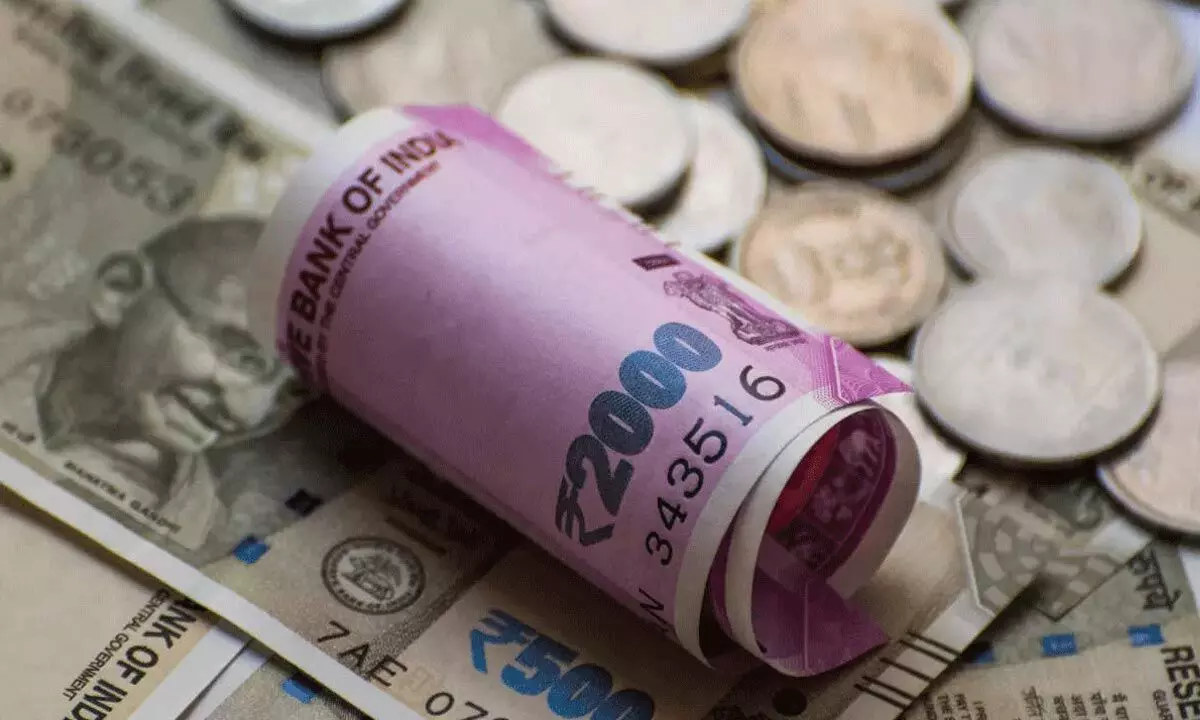Budget maintains prudence, focuses on middle class, capex
Budget 2023-24 has an eye on the general election next year, as evident from the relief to income-taxpayers, but it neither indulges in fiscal profligacy nor halts capital expenditure
image for illustrative purpose

• Capex up by 33% for the next fiscal
• No tax on income up to Rs7 lakhs
• Govt brings down highest tax rate from 42.74% to 39% for the rich
• Limits of presumptive taxation enhanced at Rs3 cr for MSMEs and at Rs75 lakhs for professionals
Finance Minister Nirmala Sitharaman's Budget 2023-24 has an eye on the general election next year, as evident from the relief to income-taxpayers, but it neither indulges in fiscal profligacy nor halts capital expenditure.
In fact, it has augmented capex by 33 per cent for the next fiscal, taking it to an unprecedented Rs 10 lakh crore, which comes out to be 3.3 per cent of the gross domestic product or GDP. Direct capital investment by the Centre is complemented by the provision made for creation of capital assets through grants-in-aid to states, which makes the 'effective capital expenditure' to Rs 13.7 lakh crore, or 4.5 per cent of GDP. "This substantial increase in recent years is central to the government's efforts to enhance growth potential and job creation, crowd in private investments, and provide a cushion against global headwinds," Sitharaman said in her Budget speech. The direct tax proposals aim to maintain continuity of and stability in taxation, further simplify and rationalize various provisions to reduce the compliance burden, promote the entrepreneurial spirit, and provide tax relief to citizens, she said.
Currently, those with income up to Rs 5 lakh per year do not pay any income tax in both old and new tax regimes. The Finance Minister has proposed to increase the rebate limit to Rs 7 lakh in the new tax regime. Thus, persons in the new tax regime, with income up to Rs 7 lakh will not have to pay any tax.
She has also reduced the number of slabs from seven to five in the new personal income tax regime which was introduced in 2020. The tax exemption limit in the new personal income tax regime has been raised from Rs 2.5 lakh to Rs 3 lakh.
This will translate into major relief to all taxpayers in the new regime. An individual with an annual income of Rs 9 lakh will now be required to pay Rs 45,000, down from Rs 60,000, under the current provisions. Similarly, an individual with an income of Rs 15 lakh would now pay Rs 1.5 lakh, as against Rs 187,500 on current rates.
Sitharaman also had the courage to provide relief to the rich, by bringing down the highest tax rate from 42.74 per cent, which is among the highest in the world to 39 per cent. It's a bold move because it carries the risk of being derided as pro-rich (and, by implication, anti-rich) by the Opposition and Left-leaning intellectuals.
Micro, small and medium enterprises will also benefit under Sitharaman's income-tax proposals. So far, MSMEs with turnover up to Rs 2 crore and certain professionals with turnover of up to Rs 50 lakh can avail the benefit of presumptive taxation. She has enhanced these limits Rs 3 crore and Rs 75 lakh, respectively, to the taxpayers whose cash receipts are no more than 5 per cent. She has also allowed MSMEs the deduction for expenditure incurred on payments made to them only when payment is actually made. The fact that the Finance Minister has been able to do all this without going on a spending spree is quite commendable. The fiscal deficit came down from 6.7 per cent of GDP in 2021-22 to 6.4 per cent 2022-23 (revised estimates), and she had pegged it at 5.9 per cent 2023-24.

